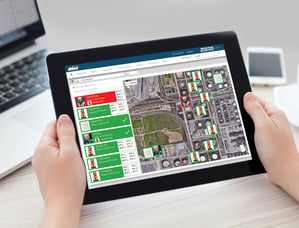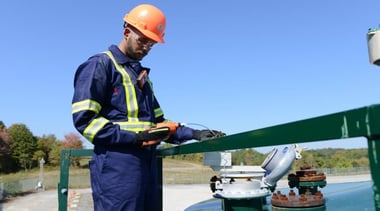To help workers stay safe on the job, employers are relying more and more on connected safety devices. Workers benefit from this connectivity by knowing they can get help if needed, while employers can reduce risk and collect valuable safety data to drive lasting improvements through these industrial internet of things (IIoT) devices.
Although this shift to a connected work environment can help protect workers and improve business performance, you must carefully consider what technology you’ll rely on. If you choose to connect workers to live monitoring software through cellular connectivity, you need to consider the network your connected devices will use.
This is even more important for devices with a long lifespan, like gas detectors. With an average life of 4-8 years, it’s vital to choose connectivity options that won’t become obsolete, leaving your workers without the real-time connectivity they rely on.
The End of 3G
Many cellular connected devices use 3G networks, which have been around for more than 17 years. Recently, more advanced cellular technologies have become viable, like 4G LTE for cell phones and LTE-M for IoT devices.
The major cellular carriers in the United States and Canada are already shutting down or phasing out their 3G networks. The sunsetting of 3G will only accelerate from here. Experts expect major carriers to shut down their 3G cellular networks by the end of 2022, with Verizon leading the pack and disabling their 3G network by the end of 2020.
This shift is rooted in the explosion of mobile internet usage over the past decade. Carriers want to reallocate capacity to their more advanced networks to provide a better experience for their users.
What Does This Mean for 3G Devices?
As cellular carriers shut down their 3G networks, 3G-based cellular IoT devices will no longer transmit data. This will be a major problem if you rely on 3G cellular connectivity to monitor vital safety stats. Workers will lose connectivity and face all the risks you sought to avoid, and you will need to reinvest in new devices or modifications to connect workers through LTE-M.
Making the Switch from 3G to LTE-M
With carriers sunsetting 3G, connected devices will need to operate on future-proof networks, like LTE-M. LTE-M networks offer a number of benefits that make them a popular choice for connected devices, especially for gas detectors:
- LTE-M is the Latest Cellular Technology for IoT Devices. Unlike 3G, there is no current plan to phase out LTE-M networks, even as 5G coverage becomes available in certain regions. Switching to cellular IoT devices that use LTE-M, like the Ventis® Pro5 will protect your investment for years to come.
- LTE-M Offers Extended Range. LTE-M networks give you better in-building and underground range compared to 3G. This extended range allows workers to stay connected, even in areas that have traditionally been hard to cover.
- Longer Battery Life. Devices connected using LTE-M technology require less battery power and less bandwidth to transfer data than 3G peers.
- Ideal for Mobile Use. LTE-M doesn't drop a connection as workers travel through several different network cells, much like a cell phone. This constant connectivity makes the technology ideal for asset tracking and fleet management.
As 3G continues to fade, IoT devices like gas detectors must offer connectivity through the latest cellular technology. Connecting devices through a network designed for IoT devices offers clear advantages for safety applications, especially gas detection.
When choosing connected gas detectors to protect your workers, make sure you also protect your investment in technology by using gas detectors with future-proof cellular technology.



